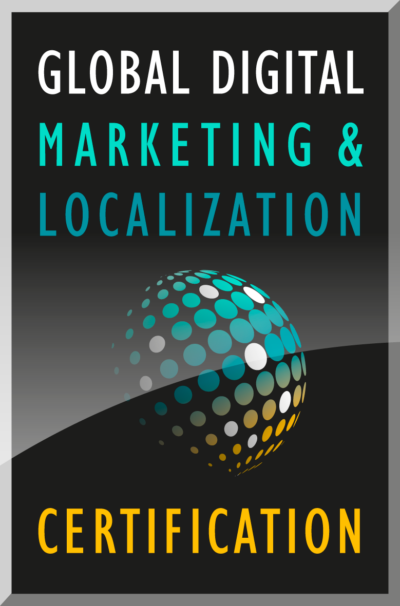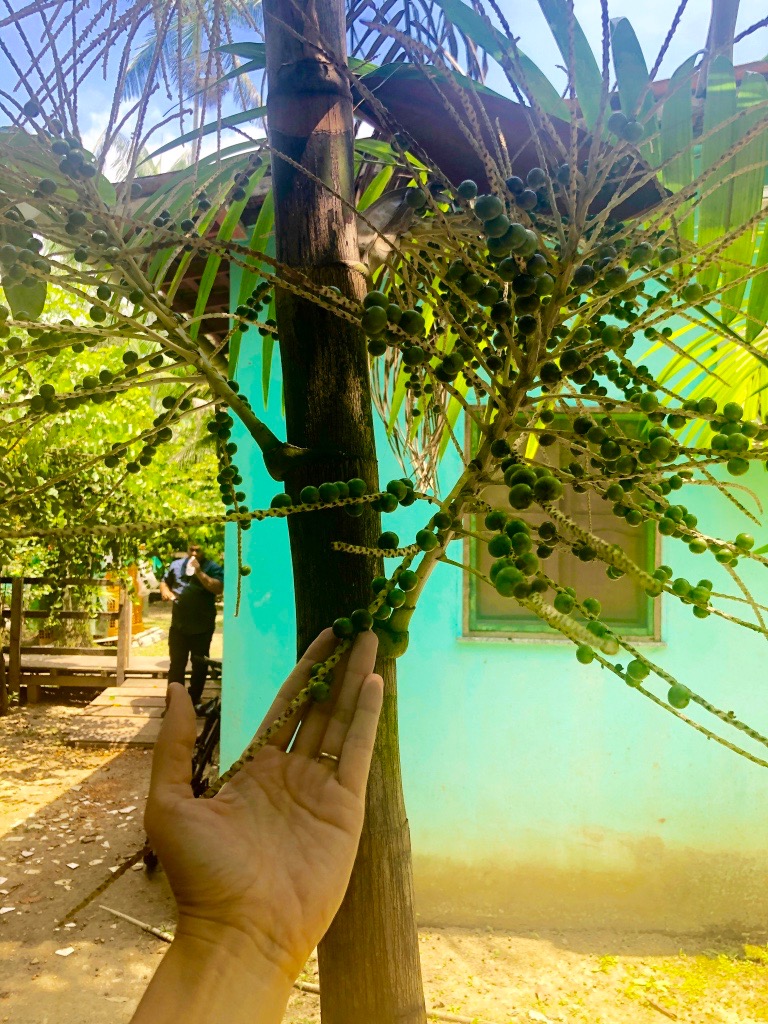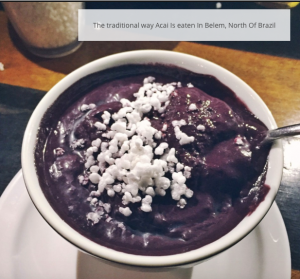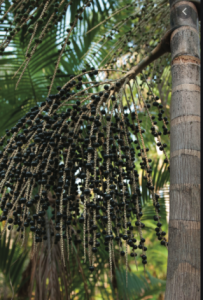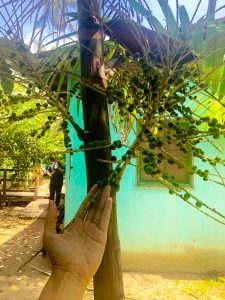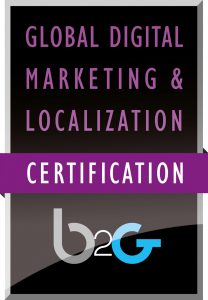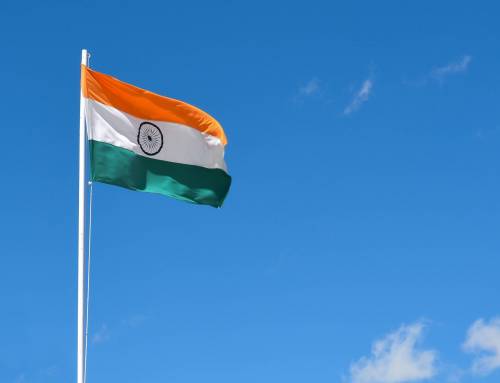This is a paper presented by Geysa Klaas, a recent graduate of both the Global Digital Marketing and Localization Certification (GDMLC) program. This paper presents the work being produced by students of The Localization Institute’s Global Digital Marketing and Localization program. The contents of this paper are presented to create discussion in the global marketing industry on this topic; the contents of this paper are not to be considered an adopted standard of any kind. This does not represent the official position of the Brand2Global Conference, The Localization Institute, or the author’s organization.
Introduction
To enter international markets and offer products that match perfectly with local tastes and preferences, savvy marketers must identify the best strategy to communicate with customers in their native languages, without losing sight of being globally efficient or compromising their brand identity. In this respect, companies need to decide how much content to keep standardized across all markets and how much to localize for specific markets. [1]
People’s tastes and preferences often change, resulting in a change in consumer demand. The changes in demand for a specific product happens due to the shifts in fashion and also due to the pressure of marketing from competitors. Inversely, when a particular product goes out of people’s tastes, the demand for them decreases. Finding a secure and lucrative global strategy takes time and attentive examination.
On the one hand, understanding your audience and being educated about the culture and multilingual markets across the world are imperative to avoid cultural blunders and driving away customers. On the other hand, maintaining a standardized global style could be a practical cost-driven strategy. It is a juggling act to design and execute a successful global outcome.
Review
Standardization and localization have different upsides for growing businesses. A “one size fits all” [2] standardized approach to global marketing may result in a lower line expense, but might not resonate with local customers. In contrast, localization can boost the customer experience and commitment by fulfilling local customers’ tastes, and, at the same time, be challenging to scale. [2]
How to strategically leverage these digital marketing approaches to smartly engage global customers will be discussed as well as the key challenges, opportunities, examples, and factors to consider when marketing to different audiences, both within and outside your home country.
First, a typical product from the Amazon region of Brazil will be presented to illustrate how this product has successfully made its way from my hometown to become a Brazilian sensation, and then reached international markets.
Thereafter, concepts of standardized and customized approaches for global customers will be discussed: The advantages and drawbacks of a standardized marketing approach, the value of a localized strategy, and the importance of finding the middle ground by blending standardization and localization.
To conclude, it will be revealed that the balancing act of combining global and local strategies can be efficient and profitable. Altogether, it will be suggested that it is worth considering the benefits to walk the tightrope between standardization and customization for a successful global strategy.
Development Section
Before we proceed, it is essential to address a core marketing question. Can we say that people around the world have the same taste and preferences?
I hold the opinion that tastes and preferences significantly affect consumers’ choices worldwide. People from around the world from different countries, or, if we take a country as diverse as Brazil with a diverse composition of indigenous and immigrant cultures, exhibits an ethnic and cultural mixing that was naturally shaped to a multicultural and multiethnic society. For example, Brazilian cuisine varies greatly by region and is strongly influenced by the local indigenous culture, which makes it especially unique. Açaí in the bowl is an example of a product that has been globally adapted to reach national and international market demands to accommodate local consumer preferences.
Açaí in the bowl, “açaí na tigela” is a Brazilian specialty from Belém, Pará (my hometown) and Amazon region in the North of Brazil. Açaí is a fruit sustainably extracted in the Amazon Rainforest, and because of its exotic nutrient, and active ingredient composition, it is known as “nature’s perfect food”. This tropical, small, dark purple berry from the açaí palm has been experiencing a huge boom unlike any other tropical fruit has experienced before. [3] Locals traditionally have açaí berry pulp in a bowl as a traditional staple food, unsweetened, with tapioca (a type of manioc) sprinkled on it, and sometimes, with a main course like fish or shrimp. This is the original açaí in the bowl typically consumed by Northern locals.
How did açaí made its way out of the Amazon Region? Researchers show that a Brazilian Jujitsu founder Carlos Gracie, [4] first promoted the açaí bowl (açaí pulp blended with banana) to his players, in the Southeast of Brazil, as a way to maximize the performance of his fighters. It appears that the marketing started to spread locally by people seeing those bumpy, rocky bodies of Jujitsu students eating the refreshing and nutritious açaí bowl near the beaches of Rio de Janeiro.Since Brazil shares a common language, Brazilian Portuguese, a standardizing content for these markets could be seen as a straightforward decision for companies to adopt across the country. However, it is essential to consider the cultural nuances with different customers. Creating one standardized marketing communication strategy with everyone has its drawbacks, especially when companies consider homogenized consumer needs. [5]
In this respect, some factors should be considered when marketing to different audiences. A localized strategy tailor products or processes to the specific conditions in each region or country. In the example above, Carlos Gracie should have used an adaptation strategy to customize açaí to the conditions in his region to meet local consumers’ tastes. The marketing mix was adjusted taking into consideration the cultural diversity and physical environment.
A standardization strategy was also maintained to a certain degree. Although toppings may vary to meet local tastes, the basic recipes of açaí are the same, and the store model of carryout or delivered açai is the same everywhere. A standardization strategy generates productivity by centralizing many regular activities, such as product design, the economy of scale in manufacturing, and reducing marketing costs.
Subsequently, Brazilian surfers and fitness enthusiasts started to savor the açaí bowl flow. Thereafter, açaí reached international terrain, boarding in Southern California and Hawaii and has been similarly popularized by surfers, who enjoyed having a refreshing and nutritious açaí bowl after surfing sessions [2]
Nowadays, the açaí berry has expanded throughout Brazil and successfully penetrated international markets. As stated earlier, it does not imply, though, that it is consumed or commercialized the same way everywhere it is distributed. In a country as big and diverse as Brazil, for instance, great variations are not uncommon, the differences in how people consume açaí across the country are huge. For example, in the Southern areas of Brazil, and Southern California in the US, the frozen berry smoothie is described as a simpler version of the globally known hyped breakfast bowl, [6] served like a smoothie, topped with granola, banana and or mixed with other fruits and guaraná syrup or honey.
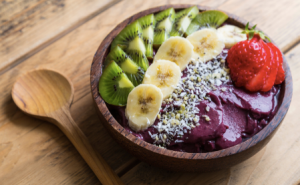
Hyped Breakfast Bowl [Photo 3]
- Açaí palm
- Fresh açaí berry
- Fresh açaí berry
- Fresh picked açaí berry
- Amazon Rain Forest açaí palm
- Geysa at Amazon Rain Forest surrounded by açaí palm
Implications
In light of all this, keeping a balance between standardizing and customizing the product marketing content is achievable. Most likely, the açaí berry fruit was supplemented with a range of add-ons, to meet consumers’ needs and demands depending on the region or country in which it was served, thus, utilizing a localized strategy.
A standardized strategy was used to a certain degree, as the recipes of the fruit pulp were maintained and delivered the same way worldwide. Within this, a localized strategy was blended with a standardized strategy to successfully reach out to consumers within and outside Brazil.
There are ways for marketing managers to walk the tightrope between standardization and customization strategies successfully. The key to a successful global strategy is to understand how to interlink these approaches together. To be successful globally and relevant locally, it is vital to consider the fundamental differences across markets, the cultural diversity, and being open to adjusting the elements of the marketing mix to find what is right for each specific situation.
In a nutshell, a standardized and customized strategy needs to be part of the same journey to achieve global relevance on a local basis.
Author Bio:

Geysa Klaas, MA, MBA, is a certified linguist, certified psychologist, and language specialist with more than 10 years working in the translation, interpretation, and localization industries. Born and raised in Brazil, she is fluent in Portuguese, English, Spanish, and conversational in French. She has lived, studied, and worked in Brazil, the United Kingdom, and the United States. Geysa is currently working as a freelance translator and localization specialist, managing translation projects for very different activities and sectors. She believes that translating is far more than transferring information from a text into a different language. Knowing the cultures, styles, and etiquettes involved is just as important as finding a way to be loyal to the original text and creating an authentic version in the target language. Quality is always her highest priority.
You can view an interview (in Portuguese) with Geysa on açaí at this location.
Connect with Geysa:
I highly recommend the Global Digital Marketing & Localization Certification course (GDMLC). It presents relevant topics with quality content highlighting the localization trends and global digital communication around the world. I enjoyed listening to the informative modules and watching the top notch interviews. Dr. Singh is very knowledgeable and his comments are very insightful. GDMLC was a valuable learning experience. Digital has never been that important. Thank you!
References:
[1] https://www.linkedin.com/pulse/striking-right-balance-standardization-vs-on-site-erdem-tokmakoglu/
[3] https://asai.at/acai-pulporganicJuice-pads-super-fruit-premium-selection100-percent-fruit
[4] https://tamboracai.com/history-of-the-acai-bowl/
[6] https://www.sunnysidecircus.com/countries/brazil/food-drinks-brazil/acai-na-tigela-iced-superfood-breakfast-bowl/ (adapted)
https://www.brandquarterly.com/localized-global-marketing-strategy
https://medium.com/@CraigWitt/customization-vs-standardization-a411a2f9aa34
Photo References:
[1] https://www.breakfastcriminals.com/acai-101-top-superfood-im-amazon-jungle/
[2] https://grow.cals.wisc.edu/departments/five-things/five-things-everyone-should-know-about
[3] https://familyapp.com/acai-
Remaining Photos Courtesy of Geysa Klaas
Disclaimer



